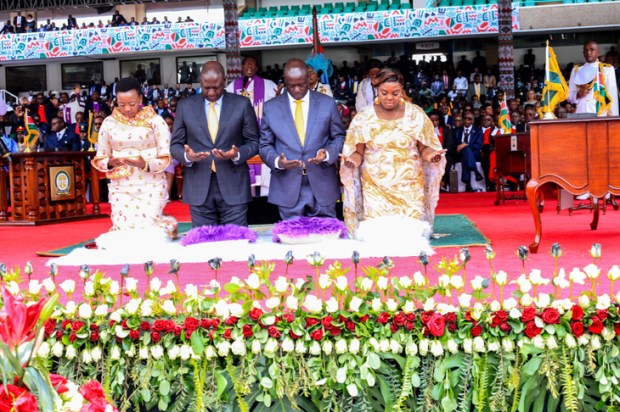Nottingham, UK
When I previewed the Ashes series in England in these pages two weeks ago I erred on the side of pessimism about Australia’s chances. Our hopes, I predicted, would rest on our pace attack, though I doubted that it could routinely seize the 20 wickets necessary to win any cricket match. Events were not kind to my predictions. The bowlers not only took 20 wickets but also scored most of the runs. Significantly, Australia has a new hero. He is a left-arm slow bowler who nearly snared a century on debut in a display of languid, uninhibited batting that shamed most of the Australian and English batting stars, who showed commendable ingenuity in finding ways to be dismissed by wayward bowling. Agar’s batting achievement was crowned by the radiant grin with which he shrugged off the colossal disappointment of losing his wicket just two runs short of a Test century on debut batting at number 11. Australia, in the midst of a rancorous winter of discontent characterised by fiercely partisan politics, projected its collective idealised image of an Australian champion on to him. If his initial manifestations of humility and common sense are any guide, he looks capable of bearing this burden of expectation with great dignity.
It was of course an epic Test match worthy of comparison to two memorable nail-biters, lost by Australia to the Old Enemy. We have never won an Ashes Test by a single wicket. The two most exciting I have witnessed where the result hinged on the last wicket pair were Melbourne in 1982 and Edgbaston in 2005. In the former Allan Border and Jeff Thomson fell three runs short. In the latter Brett Lee’s heroics failed to steer us to victory, falling a mere two runs short. Yet if any match should have seen the end to that drought it was this one, in which the combined totals of the Australian last wicket pairs was 228: a world record. But we still fell tantalisingly short.
As chance would have it, my immediate neighbour in the media box was English 30-Test veteran Derek Pringle. He played a useful hand with bat and ball in that enthralling Boxing Day Test in 1982. An astute observer of the game, he was constant source of shrewd predictions as to how England captain Alastair Cook would react to various crises. His predictions regarding Cook’s imminent bowling and fielding changes were uncannily prescient. Moreover, he was great company: indefatigably good-humoured and unfailingly happy to reminisce about past Ashes series. On the only day he was not required to file, his place was taken by Scyld Berry, a former editor of Wisden. His insights were always fascinating and perspicacious. His memory of past Ashes series was faultless. My fantasy is to recruit him and Derek for a cricket trivia night for the McGrath Foundation and ride to victory on their coat-tails.
Indeed, the camaraderie of the media box is always the great joy of any Test series. Most of the Australian contingent has shared steamy media boxes all over the world and there is a wonderful camaraderie among us. The buzz on the first morning of any Test, but especially the opening to an Ashes campaign, is indescribably electric. There is no cure for homesickness like an encounter with Gideon Haigh, Malcolm Knox, Chloe Saltau or the ABC’s National Treasure Jim Maxwell. I also enjoyed enviable access to former England captains Michael Vaughan and Michael Atherton, who were generous with their time. Both Gideon and Malcolm have books coming out soon. In Malcolm’s case he has just completed the biography of one of our recent Victoria Cross recipients, Corporal Mark Donaldson. My Army sources tell me it is a superb read.
Nottingham embraced Ashes cricket and the large Australian contingent. The supporters ribbed one another in a good-natured manner and there did not seem to be any alcohol-fuelled violence on the way out of the ground on any of the days. Indeed, the large boisterous Australian touring parties provided a much-appreciated boost to the local economy. Every night the alfresco dining venues around the market square resounded to the broad Australian twangs discussing each day’s play. All five days of the Test were sold out by January, suggesting that reports of the death of Test cricket are premature. If so I am delighted to have been wrong. I was one of the leading doomsayers who predicted that T20 cricket posed a real threat to the traditional game. But nothing can match the drama and Byzantine plotlines of an epic Test match. And this one ebbed and flowed as mysteriously as a Treasury estimate.
Being present at Trent Bridge for this remarkable Test will be a memory to treasure. The image of the ground had been etched into my young mind by the radio descriptions imparted in the claret-cured baritone of John Arlott, crackling through the chilly evenings of my childhood. So vivid were his descriptions of Lillee bowling from the Radcliffe Road end that I felt immediately at home when I arrived at the ground last Wednesday morning. Everything was just as I had imagined it for nearly 40 years.
Got something to add? Join the discussion and comment below.
Get 10 issues for just $10
Subscribe to The Spectator Australia today for the next 10 magazine issues, plus full online access, for just $10.
You might disagree with half of it, but you’ll enjoy reading all of it. Try your first month for free, then just $2 a week for the remainder of your first year.













Comments
Don't miss out
Join the conversation with other Spectator Australia readers. Subscribe to leave a comment.
SUBSCRIBEAlready a subscriber? Log in